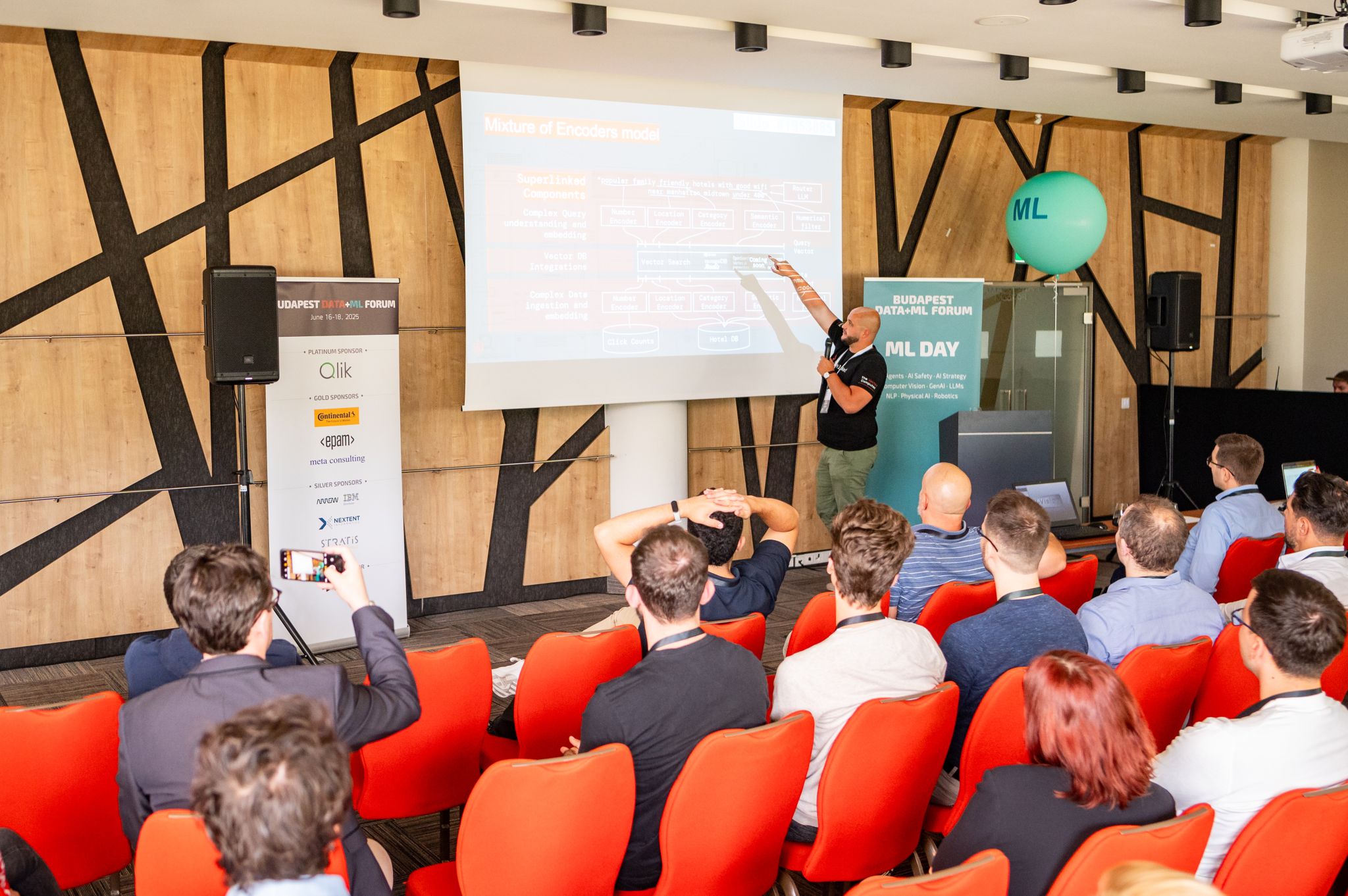
Mor Kapronczay, Superlinked’s lead ML engineer, used his slot at the Budapest Data and ML Forum to prove that search on images, numbers, maps and text can still clock sub-50 ms latencies.
Mor began by showing why vector databases are booming. Roughly forty products now fight for a slice of an estimated 1.6 billion-dollar market, all built on the same cosine-similarity trick that scales neatly with both item count and embedding size . On Superlinked’s Python testbed a single user vector hits an HNSW index in twelve milliseconds on average, with the 95th percentile sitting at fifty milliseconds .
The problem is that real queries rarely stay textual. He flashed the now-famous travel search “popular family-friendly hotels with good Wi-Fi near Manhattan Midtown under 400” and broke it into four biases: numerical, categorical, semantic and location, plus a hard price filter . Text-only embeddings force every extra signal into brittle filters or rerankers, losing nuance and speed.

Superlinked's fix is a mixture-of-encoders blueprint. A location encoder handles latitude–longitude, a category encoder maps tags, a number encoder digests prices, and a semantic encoder still does the heavy text lifting. Their outputs are concatenated into one long vector, which the system can weight dynamically at query time . The design keeps k-NN search fast while letting product teams dial relevance knobs without code changes.
Mor also called out the state of evaluation. Popular benchmarks such as MTEB and BEIR top out at a 0.6 retrieval score, largely because they ignore metadata and multimodal inputs, making them a poor proxy for production workloads . He urged practitioners to publish richer datasets and full-stack eval pipelines rather than “toy text tests”.
Audience questions veered toward hardware, index choice and how to train specialist encoders, but Mor's parting advice was simple: push as much intent as possible into the first retrieval pass, keep reranking light and treat every feature numeric or otherwise as first-class data. If hallway chatter is any indicator, teams left keen to give the encoder mix a spin.

.svg)
.svg)